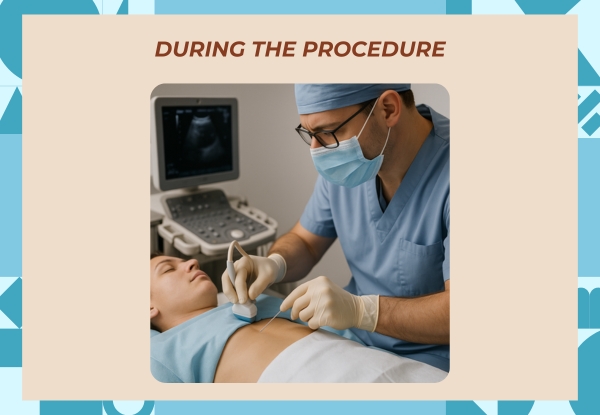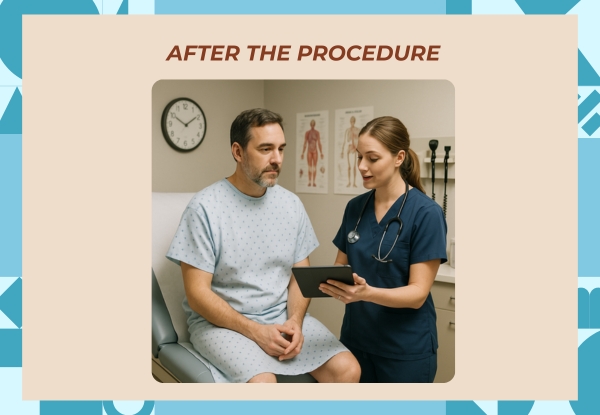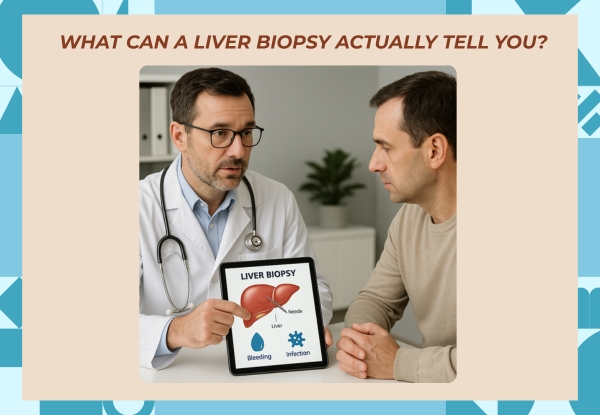
If you’ve just been told you might need a liver biopsy, your mind is probably full of questions. You’re not alone. The term sounds technical, possibly painful, and understandably unsettling. So, let’s get straight to the point and help you understand what is a liver biopsy? and why doctors suggest it.
A liver biopsy is a test where a small piece of liver tissue is collected using a thin liver biopsy needle and examined under a microscope. It helps doctors understand what’s happening inside your liver that blood tests or scans can’t always show.
Whether your liver function test came back abnormal, or your doctor suspects a condition like fatty liver disease, hepatitis, or even something more serious, this test can provide the clarity they need to decide your treatment path.
Why Might You Need a Liver Biopsy?
There are specific reasons why doctors recommend this test. It’s not something done lightly, and there’s always a clear clinical reason behind it. Here’s when a liver biopsy might be considered:
- Abnormal liver function tests that keep coming back outside the normal range, without a clear reason
- Suspicion of non-alcoholic fatty liver disease (NAFLD) or cirrhosis
- Diagnosing or monitoring chronic hepatitis (viral or autoimmune)
- Evaluating unexplained liver mass lesions
- Checking for drug-induced liver injury (DILI) from medications
- Monitoring post-liver transplant patients for signs of rejection
- Investigating conditions like autoimmune hepatitis even if blood tests appear normal
- Ruling out liver-related causes in fever of unknown origin
It’s also a go-to test when doctors need to assess the stage or severity of an already diagnosed liver disease.
The Different Ways a Liver Biopsy Can Be Done
Not every biopsy is performed in the same way. The choice of method depends on your health history and current condition. Here are the main types:
1. Percutaneous Biopsy
This is the most common method. A thin liver biopsy needle is inserted through the skin, usually on the right side of the abdomen. You’re given a local anaesthetic so the area feels numb.
2. Transjugular Biopsy
If you have bleeding disorders or ascites (fluid in the abdomen), this is the safer option. Instead of going through the skin, the needle reaches your liver through a vein in your neck. It reduces the risk of bleeding inside the abdomen.
3. Laparoscopic Biopsy
This method is used when the biopsy needs to be done during another surgical procedure or if doctors want to look directly at the liver surface before collecting the sample.
Each method has its own purpose and safety considerations. Your doctor will suggest the right one based on your health condition.
Is a Liver Biopsy Painful or Risky?
Most people feel a bit of pressure or a dull ache during the biopsy, but it’s rarely described as sharp pain. Some patients feel sore for a day or two after. That’s entirely normal.
Still, there are some risks to be aware of. These are uncommon, but they include:
- Bleeding where the sample was taken
- Injury to nearby organs (very rare)
- Infection
- Reaction to anaesthesia or sedatives
So if you’ve been searching for the risks of a liver biopsy, the real answer is that it’s generally a safe procedure when done with proper precautions. Your doctor will evaluate your blood clotting ability beforehand, especially if you’re at higher risk of bleeding or have conditions like ascites or obesity.
What Happens Before, During and After the Test?
You might be asked to fast for a few hours beforehand and avoid certain medications like blood thinners.
During the Procedure

- You’ll lie on your back or side, depending on the technique
- The skin will be cleaned, and a local anaesthetic will be applied
- The doctor will guide the liver biopsy needle to the liver
- The sample is taken, and you’ll be asked to rest afterward
The entire process usually takes 15 to 30 minutes. Most patients don’t need general anaesthesia.
After the Procedure

- You’ll be observed for a few hours to check for bleeding
- Mild soreness around the area is normal
- You’ll likely be told to avoid heavy lifting or intense physical activity for a couple of days
If you’re in Mumbai and considering where to go, Midas Care Clinic is one of the recommended centres offering biopsy test in Mumbai. Patients often search for the best diagnostic center in Mumbai, and it helps to choose a place that’s known for safe and guided procedures.
What Can a Liver Biopsy Actually Tell You?

There’s a misconception that this test is only for cancer detection. In reality, aside from liver cancer, what else can a liver biopsy detect includes a wide range of conditions:
- Inflammation from hepatitis
- Fatty changes from NAFLD
- Fibrosis or early signs of cirrhosis
- Medication-related damage
- Liver infections like tuberculosis or fungal conditions
- Rejection signs in transplanted livers
The sample helps doctors not just diagnose, but also stage the disease, which is essential for deciding the right treatment
Where Can You Get a Liver Biopsy in Mumbai?
If you’re looking for a reliable facility, Midas Care Clinic is well-equipped for the procedure. It’s often recommended by specialists and searched by users as the best diagnostic center in Mumbai for guided and safe liver evaluations.
Whether you’re booking a biopsy test in Mumbai for diagnosis or follow-up, it’s important to go to a place with experienced staff and post-procedure support.
FAQs
Q1. Is a liver biopsy always necessary for diagnosis?
Answer: Not always, but it becomes essential when non-invasive tests don’t explain abnormal liver function or symptoms.
Q2. How long does the procedure take?
Answer: Usually between 15 and 30 minutes. The recovery time at the clinic is longer, often a few hours.
Q3. Can I go home the same day?
Answer: Yes, most liver biopsies are done on an outpatient basis, but someone should accompany you.
Q4. How long does it take to recover?
Answer: Soreness might last a day or two. Most people return to light activities within 24 to 48 hours.
Q5. Does liver biopsy leave a scar?
Answer:It might leave a very small mark, similar to a pinprick, especially in percutaneous biopsies.
Q6. Can I eat after the biopsy?
You’ll be allowed to eat after your observation period is over, usually within a few hours.
Q7. Will I feel pain during or after?
Some mild discomfort is normal, but severe pain is rare. Always inform the doctor if pain lasts more than 24 hours.
Conclusion
A liver biopsy might sound intimidating, but it’s often one of the most useful steps in understanding what’s really going on inside your body. Whether it’s to confirm a diagnosis, monitor an existing condition, or rule something out, the information gained from this small sample can lead to better, more targeted treatment.
If you’ve been advised to go ahead with the procedure, take a moment to ask your doctor any questions you have. It’s your body, and you deserve to feel informed and at ease. And if you’re based in Mumbai, clinics like Midas Care Clinic and other trusted centres known for accurate biopsy tests in Mumbai can guide you through the process with care.
The clearer the diagnosis, the better the path forward. A liver biopsy is one step closer to that clarity.

